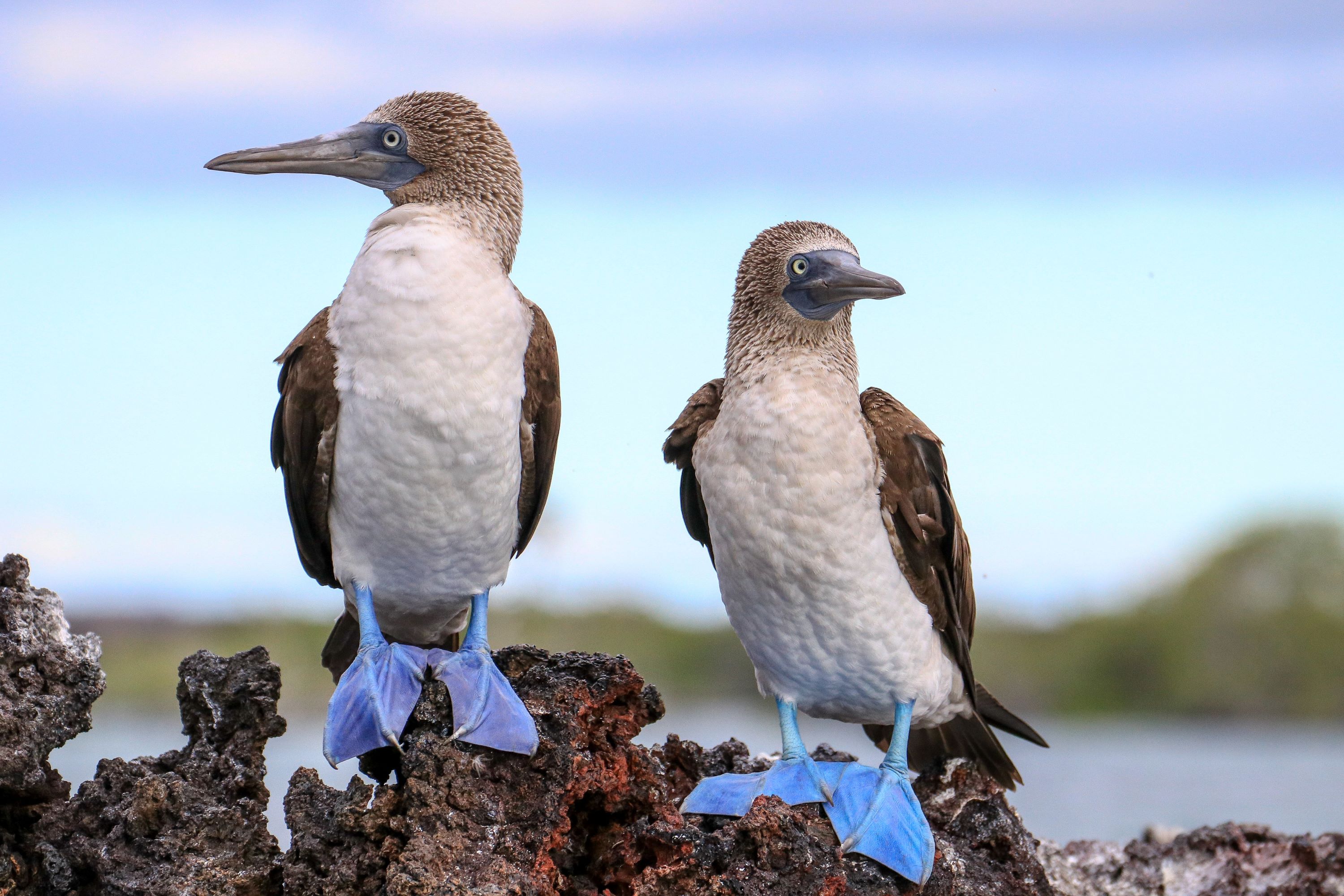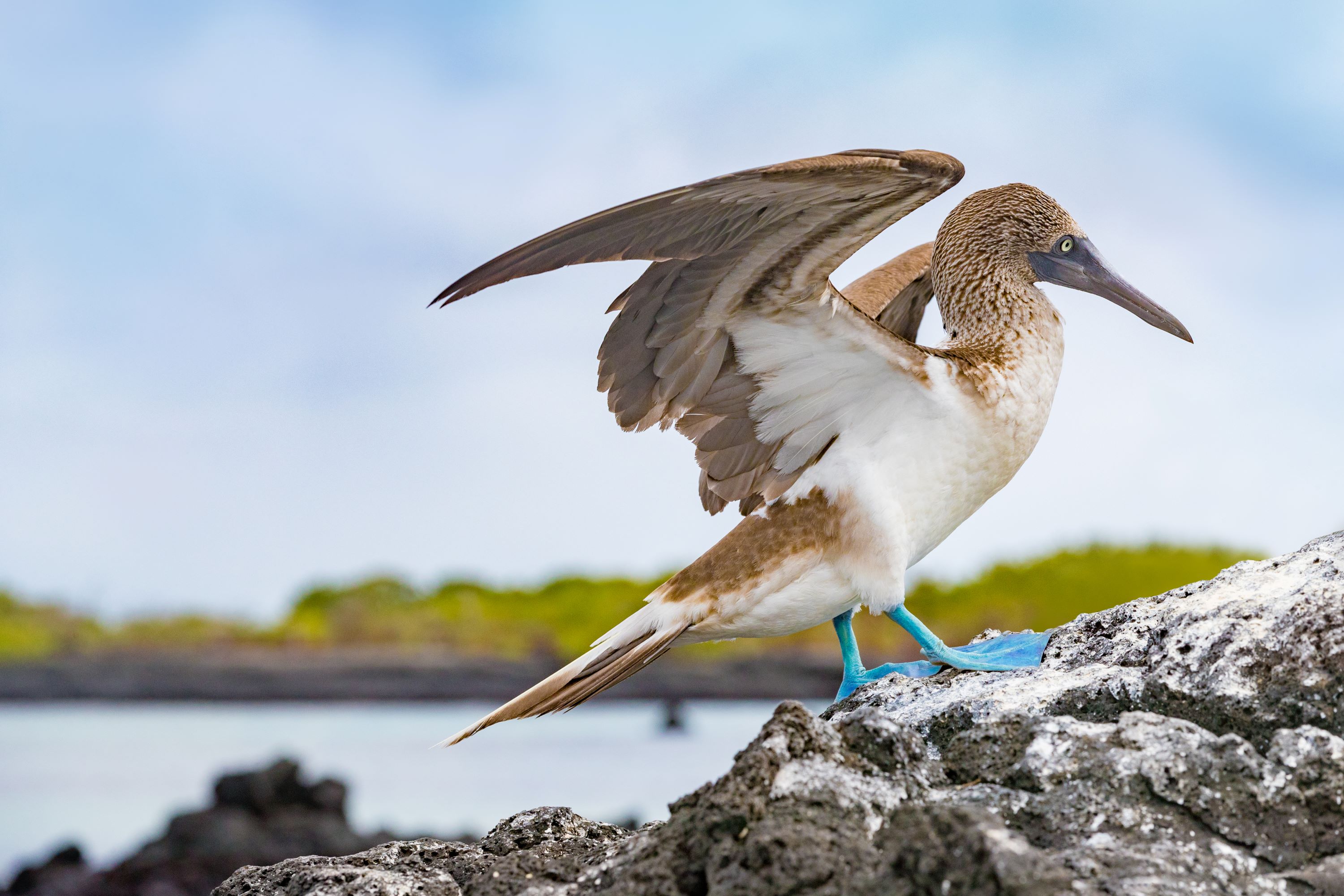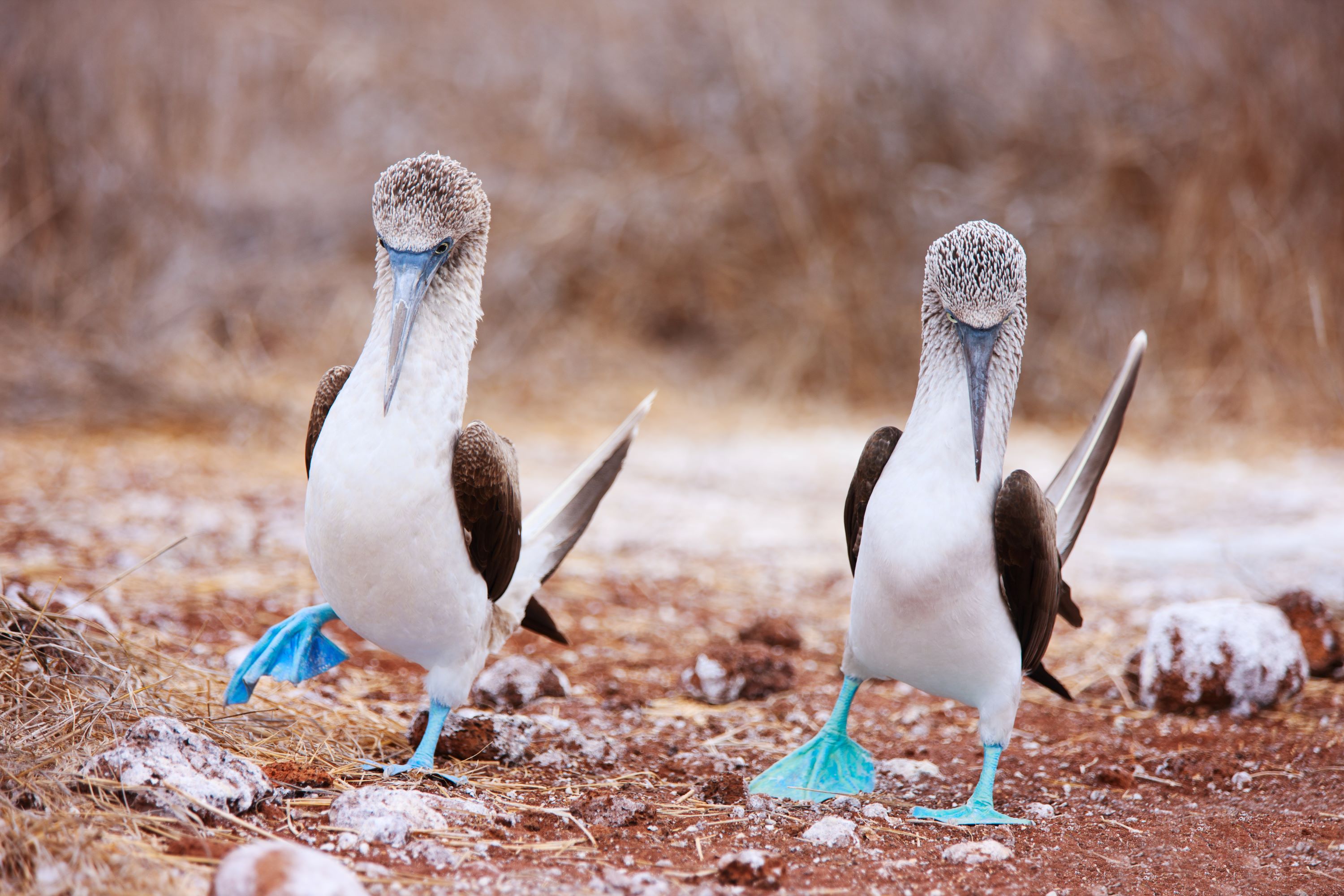
The Blue-footed Booby in Utah
Introduction to the Blue-footed Booby
The Blue-footed Booby, scientifically known as Sula nebouxii, is a marine bird renowned for its vivid blue feet and unique mating dance. Belonging to the Sulidae family, it's primarily found along the Pacific coasts of Central and South America. The bird's name "booby" derives from the Spanish term "bobo," meaning "fool" or "clown," which reflects its somewhat clumsy movements on land and its fearless, approachable nature. Despite their awkwardness on land, Blue-footed Boobies are incredibly agile and skilled in the air and water.
Physical Characteristics
Blue-footed Boobies are medium-sized birds, with a body length of about 81 cm and a wingspan ranging between 1.5 and 1.7 meters. They are easily distinguishable by their bright blue feet, which play a crucial role in courtship rituals. These birds have a sharp, pointed beak and a sleek, streamlined body designed for efficient diving. The plumage of the Blue-footed Booby is predominantly brown and white, with the brown coloring more prominent on the wings and back.
Feeding and Hunting Techniques
In terms of feeding, Blue-footed Boobies are piscivores, mainly consuming fish. They are excellent hunters, known for their high-diving technique from heights of up to 100 feet. Upon spotting a school of fish, they fold their wings back and dive into the water at high speeds, catching their prey with their sharp beaks. Their diet predominantly consists of small fish such as sardines, anchovies, and mackerel.

Breeding and Courtship Behavior
The courtship rituals of the Blue-footed Booby are particularly fascinating. Males display their bright blue feet in an elaborate mating dance, lifting them high and strutting before the female in a series of movements that also include sky-pointing, wing-spreading, and vocalizations. These rituals are crucial, as the color of the male's feet plays a significant role in female mate selection, with brighter feet indicating a healthier, more desirable mate.
Nesting and Parenting Habits
Blue-footed Boobies are ground nesters, often laying their eggs on bare, rocky surfaces without any nesting material. They typically lay two to three eggs, which are incubated by both parents for about 41 to 45 days. Chicks are born with a covering of white down and are nurtured by both parents through regurgitated fish. The parental care is extensive, with the young being dependent on their parents for up to two months post-fledging.
Habitat and Distribution
The natural habitat of the Blue-footed Booby is largely restricted to the tropical and subtropical islands of the Pacific Ocean, particularly the Galapagos Islands. They prefer arid, rocky coastal areas and small, isolated islands where they can nest and roost without significant threat from predators.

The Blue-footed Booby in Utah
Sightings of Blue-footed Boobies in Utah are exceedingly rare and are generally considered accidental. These instances typically occur when birds are blown off course by storms or when they wander north during food shortages. In Utah, sightings have been sporadic and usually concentrated around large bodies of water like the Lake Powell. These appearances, although infrequent, offer birdwatchers in the state a rare glimpse of this exotic species, far from its usual coastal habitats.
Conservation Status and Challenges
Globally, the Blue-footed Booby is not currently considered endangered, but its population has been experiencing declines in certain areas. The main threats to their survival include habitat loss, pollution, and overfishing, which reduce their food supply. Conservation efforts are focused on habitat preservation and monitoring of fish stocks to ensure sustainable feeding grounds for these birds.
Conclusion: The Allure of the Blue-footed Booby
In conclusion, the Blue-footed Booby, Sula nebouxii, with its striking blue feet and unique behavioral traits, is a fascinating species in the avian world. Although their presence in Utah is a rare and unusual event, it offers a unique opportunity for local wildlife enthusiasts and birdwatchers to observe a species that is generally found in more tropical locations. Their unexpected appearances serve as a reminder of the dynamic and unpredictable nature of bird migration and distribution, adding an intriguing element to the biodiversity of the region. The Blue-footed Booby remains a symbol of the rich and diverse avian life that graces our planet, captivating the interest and imagination of all who are fortunate enough to witness it.